If you run CX or support for a subscription business, you already know customer feedback contains the answers to churn.
The problem isn’t capture, since tickets, surveys, reviews, and chats are overflowing. The problem is stitching it together quickly enough to spot trends, diagnose root causes, and intervene before customers lapse.
Legacy feedback tools are optimized for retrospectives and yearly planning. But when your retention targets tie straight to revenue, you need real-time clarity on what’s breaking, why it’s occurring, and which accounts are at risk today.
Customer feedback management systems meet this need by unifying multi-channel input into a single source of truth with automated analysis, churn detection, and actionable guidance.
The best solutions don’t just categorize comments; they surface outliers, forecast retention risk, and suggest next-best actions so support, product, and success can prevent churn instead of reacting to it.
This article evaluates leading customer feedback management systems built for retention-minded businesses, comparing features so you can choose the platform that converts feedback into measurable churn prevention.
Best Customer Feedback Management Systems: A Comparison Matrix
7 Top Customer Feedback Management Systems
Let’s go over the best customer feedback management systems you can rely on:
1. SentiSum
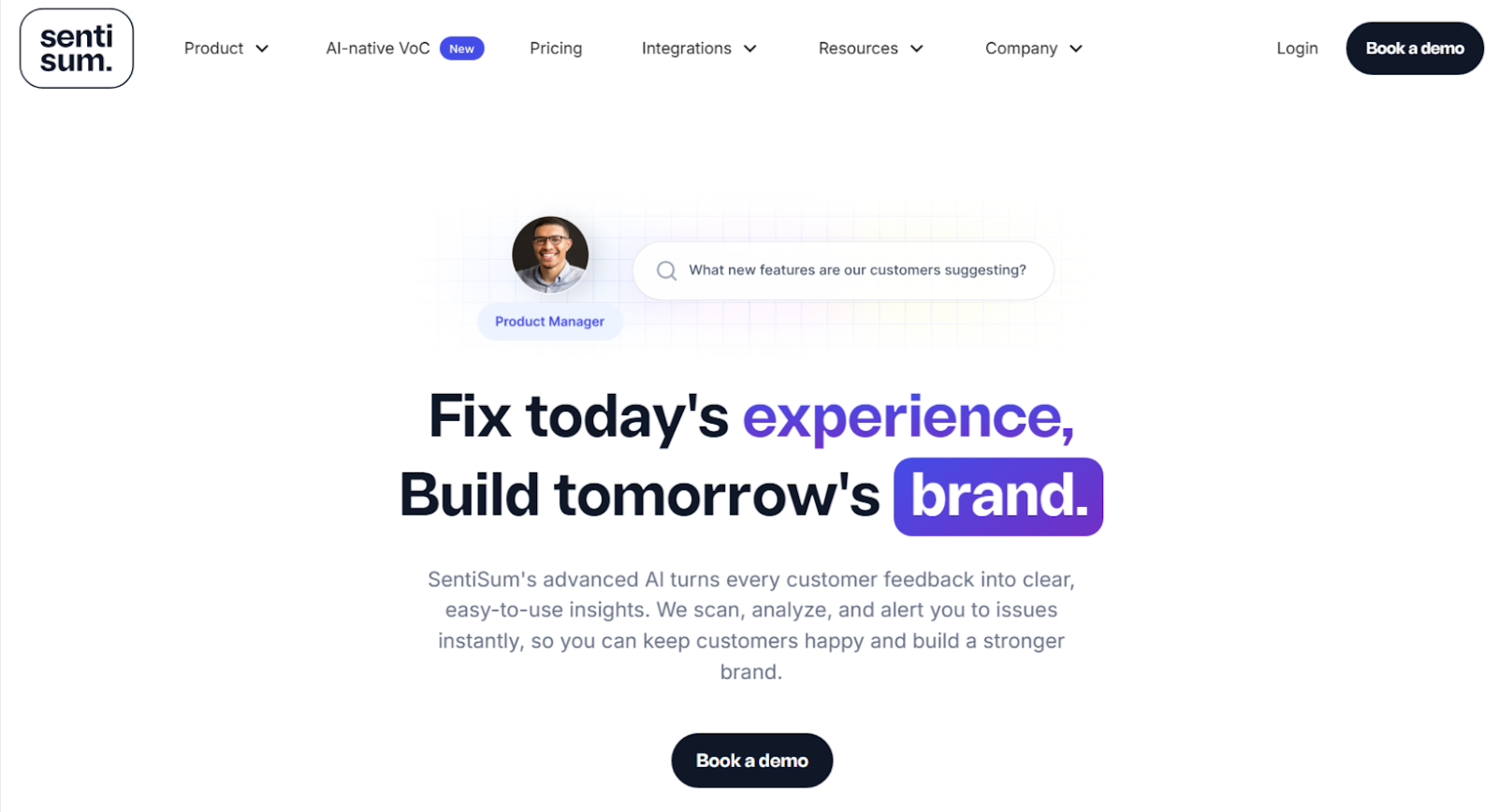
SentiSum is an AI-native Voice of Customer platform that helps you go beyond collecting customer feedback to actually understanding and acting on it. Instead of keeping support tickets, chats, emails, reviews, and surveys scattered across separate systems, SentiSum unifies them into one dashboard with real-time churn detection and prevention capabilities.
Kyo, SentiSum's AI agent, highlights anomalies, detects churn risks, and suggests next-best actions in real time. For example, if complaints spike around billing or product quality, Kyo surfaces the root cause and recommends specific actions to prevent churn before customers leave.

This enables your team to respond faster and with more confidence, whether you're fixing a product bug, updating a process, or proactively reaching out to at-risk accounts. For subscription-based businesses aiming to reduce churn, this real-time visibility transforms how support, product, and customer success teams collaborate on retention.
SentiSum also predicts future risks by identifying behavior patterns that signal churn, giving your team time to act before revenue walks out the door. This shifts you from reactive firefighting to a proactive retention strategy.
Key Features
- Real-time, multichannel feedback analysis: Consolidate data from support systems, surveys, calls, chats, and social platforms into a single dashboard, giving you a unified view of customer sentiment and enabling you to spot retention risks as they emerge, not weeks later.
- Automated tagging and categorization: Every piece of feedback is automatically tagged by topic, sentiment, and reason for contact, with custom tags tailored to your business, so your team can prioritize high-impact issues like billing problems or product defects that drive churn.
- Advanced filtering and saved views: Filter feedback by sentiment, channel, time frame, or tags, then save those views to track long-term trends or drill into specific churn drivers, making it easy to measure whether your retention efforts are working.
- Root cause detection, trends, and alerts: The system monitors for anomalies like sudden spikes in cancellations or product complaints and sends real-time alerts, allowing you to fix problems before they escalate into customer exits and revenue loss.
- Predictive retention and churn insights: Get early warnings on accounts most at risk of leaving, with clear explanations of why customers are at risk, enabling your success team to take targeted corrective actions that protect revenue.
- Action tracking and collaboration: Turn insights into assigned tasks directly within the platform, set deadlines, and track progress across support, product, and leadership teams to ensure feedback drives measurable retention improvements, not just reports.
- Agent performance metrics and QA tools: Evaluate support interactions to understand how agent performance affects customer satisfaction and retention, with QA cards that provide managers with detailed assessments to guide coaching and reduce churn-driving friction.
- Integrations and workflow automation: The platform integrates seamlessly with Zendesk, Freshdesk, Intercom, Dixa, Gorgias, and leading survey platforms, pushing insights back into these systems to enable intelligent ticket routing, prioritization, and faster resolution of retention-critical issues.

Case Study
JustPark uses SentiSum to spot driver problems before they cost thousands in revenue. With feedback scattered across five or six sources, the team struggled to see patterns quickly enough to act.
After implementing SentiSum, they immediately identified a critical issue: dozens of drivers daily were experiencing barrier problems at a major partner's car parks. By digging into the feedback, they discovered a missing feature that allowed drivers to change their license plates.
"We were able to very quickly spot the issues," says Steven Burt, Global Customer Experience Director. "We fixed that problem. It would have saved us thousands in revenue."
The platform also helps analyze stadium launches and impress clients in pitches.
📽️Watch the full video here:
SentiSum x JustPark | JustPark Turns Driver Feedback Into Instant CX Wins (Case Study)
Relate Read: Customer Feedback Analysis: Step-By-Step + Template
2. Medallia

Medallia helps organizations capture, analyze, and act on experience signals across customers, employees, patients, and citizens.
Its goal is to convert disparate feedback and experience data into prioritized, actionable insight that drives improvements across operations and strategic decisions.
Medallia is built for enterprise scale, supporting global deployments, sophisticated analytics, strong integrations, and high security.
Key Features
- Omnichannel signal capture: Medallia collects experience data from multiple sources, including surveys, voice, chat, digital behavior, social media, in-person interactions, and more. This gives a holistic 360° view of the experience.
- AI / Text & Speech Analytics: The platform embeds AI and machine learning in its text and speech analytics to extract sentiment, intent, emotion, and effort from unstructured feedback. Medallia also continuously refines its AI models (no-code and low-code tuning) to keep insights relevant.
- Generative AI innovations: Medallia has launched new generative AI capabilities, including Ask Athena (a conversational query of experience data), Intelligent Summaries, Smart Response, and advanced Theme generation, to accelerate insight-to-action.
- Alerts and action workflows: The platform surfaces AI-powered alerts to flag pressing issues, risks, opportunities, and routes them to the right teams. It supports closed-loop workflows, allowing teams to follow up, resolve issues, and monitor outcomes.
- Analytics and research tools: Medallia includes tools such as key driver analysis, pivot tables, cohort tracking, real-time weighting, significance testing, and advanced exports, enabling more profound insights into feedback trends.
- Enterprise integrations and scalability: The system integrates with CRMs, support platforms, and data systems (e.g., Salesforce, ERP), supporting global deployment, compliance, and governance.
Related Read: 10+ Best Medallia Alternatives (Better for Retention & CX Teams)
3. Thematic
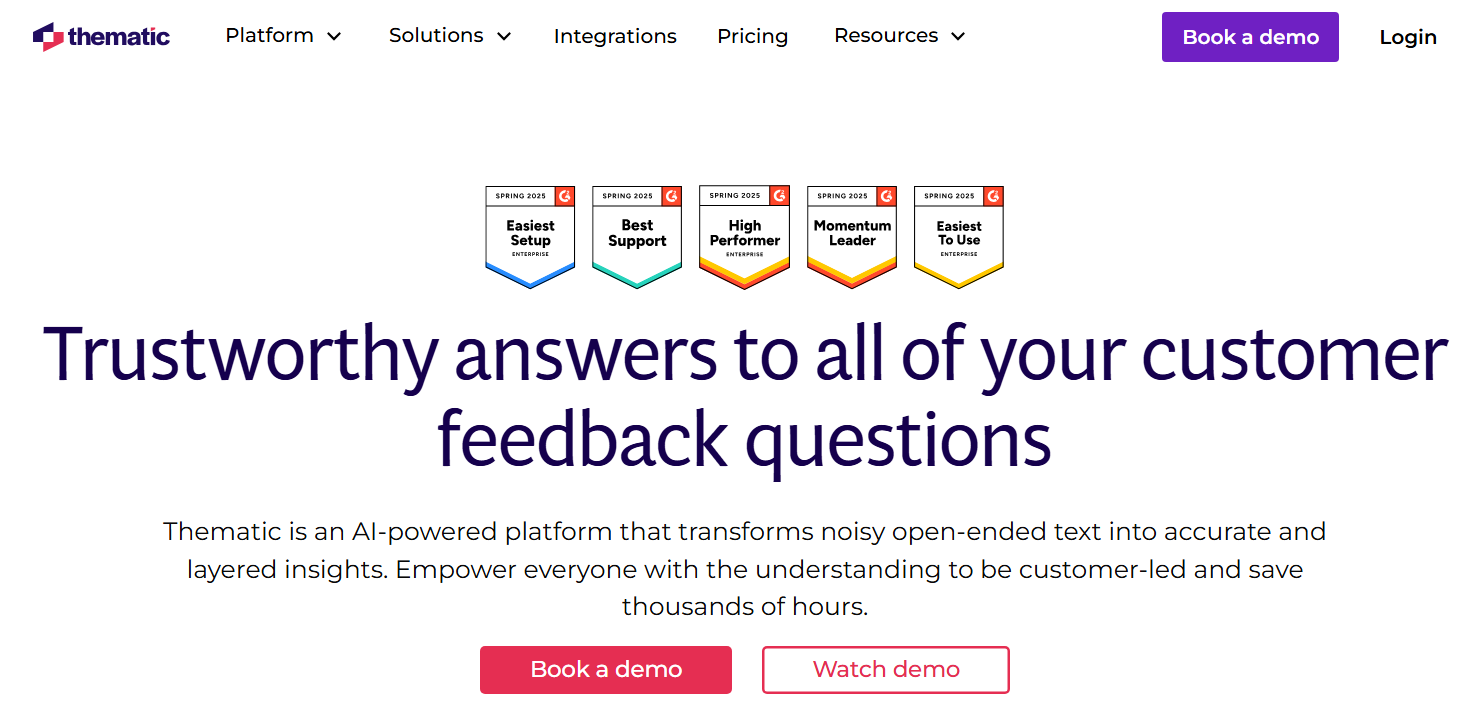
Thematic, by GetThematic, is a feedback management platform that focuses on transforming large volumes of unstructured text, such as reviews, open survey responses, support tickets, and social media comments, into actionable insights.
It utilizes AI and natural language processing to identify recurring themes and sentiment, then presents these insights in dashboards and reports that teams can act upon. Its design emphasizes human-in-the-loop refinement, allowing business users to guide or adjust the AI's outputs to align with their needs.
Key Features
- Theme and tag detection: Thematic automatically generates themes and attaches tags to feedback as it comes in. Users can merge, edit, ignore, or refine these themes to better align with business language or priorities.
- Unified feedback streaming and multi-source ingestion: The platform ingests feedback from multiple sources, including surveys, reviews, CRM systems, and social media, and merges them into a single feedback “fabric.” This enables teams to filter and analyze data across multiple channels.
- Dashboards and filtering: Users can explore the data via dashboards, filtering by dimensions such as theme, sentiment, product, region, channel, or date. They can then drill from aggregated views down to individual feedback entries.
Related Read: Top Thematic Alternatives for Feedback Analysis
4. Chattermill

Chattermill is a customer feedback management and Voice of Customer (VoC) intelligence platform that unifies feedback from every channel, applies AI to extract insights, and surfaces what matters most.
It aims to enable CX, support, product, and insights teams to act confidently on customer needs by transforming messy text feedback into clear insights.
Key Features
- Instant AI tagging, theme and sentiment detection: Chattermill’s AI model (called Lyra) automatically categorizes feedback into themes and applies sentiment scoring. It can even detect multiple sentiments in a single comment.
- Anomaly detection and trend alerts: The platform identifies deviations and trend shifts, such as sudden spikes in complaints or drops in sentiment, and sends alerts so teams don’t miss warning signs.
- Strong integrations and data ingestion: Chattermill ingests data from various sources, including survey tools, support systems, review platforms, social media, live chat, and more, consolidating all feedback into a single system. It also supports APIs and custom data uploads.
Related Read:
Best Chattermill Alternatives (AI-Powered Feedback Analytics)
Medallia vs Chattermill: Which Feedback Analytics Tool Fits Your Business?
5. InMoment

InMoment offers an experience improvement platform designed for enterprises that want to listen, analyze, and act on feedback throughout the entire customer journey.
Its core is the XI (Experience Improvement) Platform, which brings together data from customers, employees, products, and markets to provide a unified view of experience.
InMoment positions itself as more than just feedback collection; it aims to help organizations tie experience insights to business outcomes.
Key Features
- Feedback management and multi-channel surveys: InMoment supports NPS, CSAT, CES, and microsurveys across multiple channels, including email, in-app, SMS/WhatsApp, web, and QR codes. It also allows customizing surveys in various languages.
- Auto-tagging and text analytics: The platform automatically tags qualitative feedback in real-time, categorizing comments into themes for routing and further analysis. It employs self-serve text analytics, sentiment and emotion recognition, and natural language understanding.
- Active Listening and generative AI enhancements: InMoment has introduced an AI-powered Active Listening feature that prompts more detailed responses in real-time and utilizes generative AI to enrich feedback. The XI enhancements also include smarter summarization, predictive intent detection, and more.
- Dashboards and reporting: InMoment offers customizable dashboards, role-based reporting, story-style reports, templates, and mobile reporting capabilities.
- Integrations and architecture: The platform supports out-of-the-box connectors and custom integrations (including CRM, marketing, and support systems), as well as APIs and SDKs. It’s built on enterprise architecture to scale globally.
Related Read:
Chattermill vs InMoment - Plus One Smart Alternative
6. Hotjar

Hotjar is a tool designed to help you understand how users interact with your website. It combines feedback collection and behavior analytics to reveal what users do, why they do it, and where they get stuck.
Rather than focusing solely on big enterprise Voice-of-Customer programs, Hotjar emphasizes in-product/on-site UX feedback, allowing teams to see what elements of their site are working (or not) via feedback widgets, surveys, and behavioral data.
It’s especially useful for product teams, UX designers, marketers, and anyone who wants to refine the user journey by observing, listening, and iterating.
Key Features
- Feedback widget: Hotjar allows you to add a widget to your website that users can interact with. They can rate their experience (“Hate” to “Love”), leave comments, optionally attach screenshots of the page element they’re referring to, and even provide their email address for follow-up.
- Surveys: Hotjar offers a variety of survey types, including embedded surveys, popovers, full-screen surveys, button-initiated surveys, bubble-style surveys, and surveys via link (hosted on a separate domain if needed). These surveys support multiple question types (ratings, short or long text, etc.), can be triggered based on user behavior or page URL, and are fully customizable.
- Filtering, metadata, and response analytics: You can see not just the raw feedback, but also filter by metadata such as device, browser, URL, and date. Surveys and feedback responses include performance statistics (starts, completions, drop-offs), sentiment analysis, automated tagging, and AI-generated summaries. The data can be exported.
- Targeting and triggering: You can set the feedback widget or surveys to appear under specific conditions, such as for certain URLs, device types, or based on user attributes. You can also control how much traffic sees the widget (percentage-based) or trigger it via JavaScript events.
7. SurveySparrow
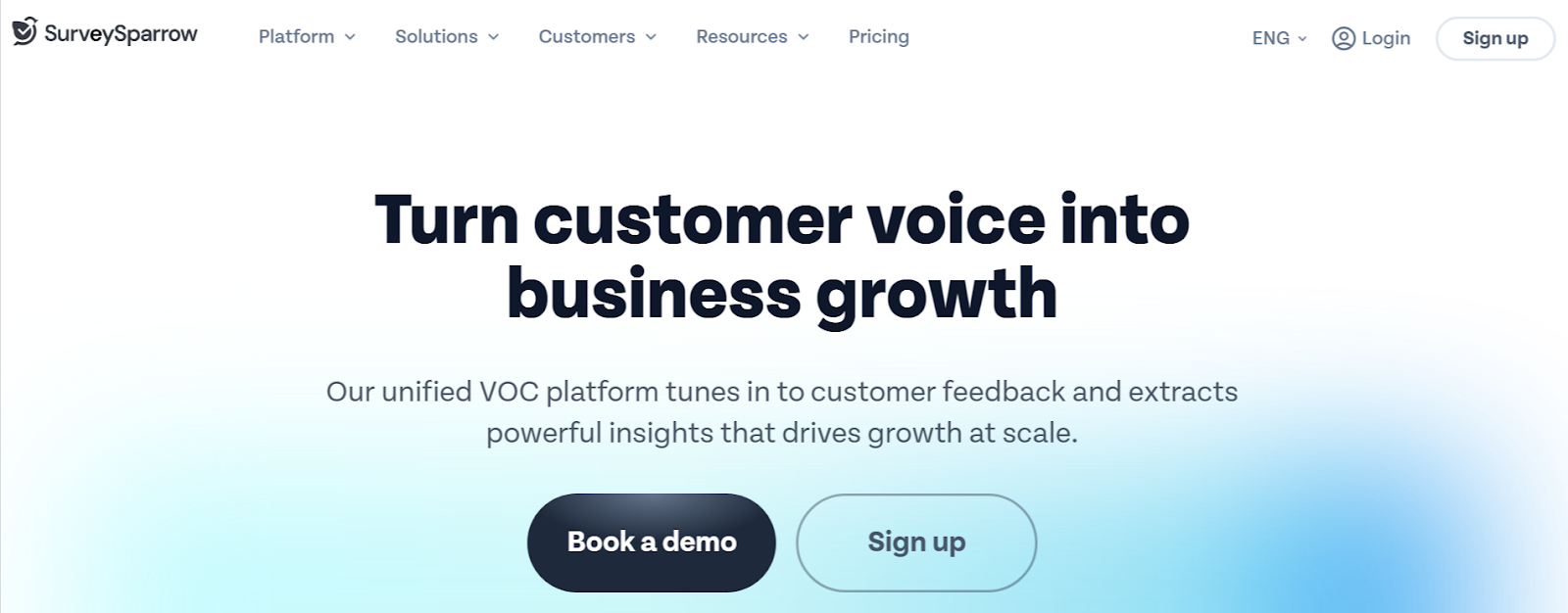
SurveySparrow is a survey and feedback tool built to make feedback feel more conversational and engaging. Its goal is to improve response rates by reducing friction in how people give feedback, via chat-style or conversational forms, multiple question types, and plenty of customization.
The platform supports everything from customer satisfaction (CSAT) and Net Promoter Score (NPS) to Customer Effort Score (CES) and employee assessments.
It also has capabilities for automating follow-ups, managing tickets created from survey responses, and providing visual dashboards so teams can see trends in real-time.
It’s suited for organizations that heavily rely on surveys as their feedback engine, but want them to feel more human and less formal.
Key Features
- Conversational / chat-style surveys and diverse question types: SurveySparrow supports “Conversational Forms” and “Chat Surveys” to make surveys feel like a dialogue rather than a rigid form. It includes over 30 question types (rank order, matrix, file upload, etc.), voice transcription of responses, multilingual surveys (supporting over 70 languages), and templates to expedite setup.
- Multi-channel distribution and omnichannel reach: You can send or embed surveys via email, SMS, WhatsApp, share via web links, or embed them in websites/apps. There's also an offline mode (kiosk) for data collection without an internet connection.
- Dashboards and real-time analytics: SurveySparrow provides executive dashboards where you can create widgets (bar charts, line charts, journey charts, etc.), filter by various dimensions (survey channel, response completeness, questions), and monitor KPIs like response rate and completion.
- Ticket management and automation: It helps close the feedback loop by converting survey responses (especially negative or concerning ones) into tickets, assigning them, tracking them, and automating escalations. Additionally, workflows, recurring surveys, webhooks, and integrations are used to push data out or pull it in.
4 Key Features to Look for in a Feedback Management System
Here are four key features to look for:
1. AI-native feedback analysis (not just AI-powered tagging)
The difference between AI-native and AI-powered matters for your team's speed and accuracy. AI-powered tools add automation on top of traditional feedback workflows (like tagging surveys after you collect them). AI-native platforms are built differently. They process unstructured feedback in real time across every channel at once.
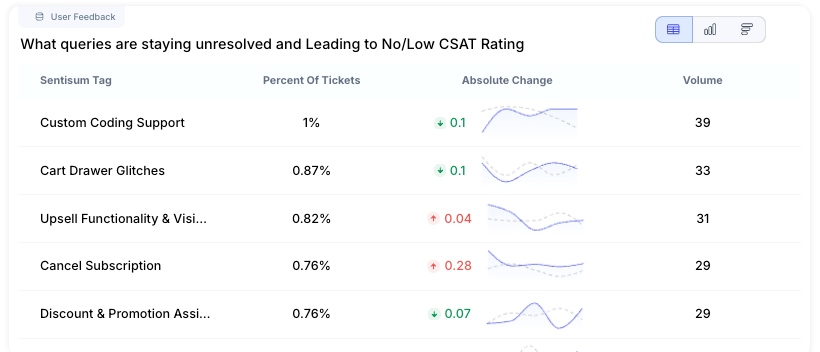
Look for systems that automatically sort feedback by topic, sentiment, and churn risk without needing weeks of setup or training. The platform should spot patterns across support tickets, reviews, surveys, and chats immediately, not after you've already lost customers to the same problem.
For subscription businesses trying to reduce churn, this means catching root causes and retention risks as they happen, giving your team time to fix issues before customers leave.
2. Real-time churn detection and predictive retention insights
Speed matters when you're trying to save customers. Your system should alert you the moment feedback patterns change (like a spike in cancellation requests, complaints about a specific feature, or sentiment dropping among your best customers).
Beyond just alerting you, the platform should explain why customers are at risk and suggest specific actions your team can take right now. Suitable predictive tools spot the warning signs that show up before customers actually churn, so you can reach out to at-risk accounts before they've made up their minds to leave.
For CX leaders responsible for keeping customers, this changes feedback from a backward-looking report into an early warning system that protects revenue.
3. Cross-functional visibility and workflow integration
Feedback isn't just for support teams. Product needs to know which bugs are pushing customers away. Customer success needs to see which accounts are showing frustration. Leadership needs insights that connect feedback trends to business results like revenue retention and growth.
Your system should work smoothly with the tools your teams already use (Zendesk, Freshdesk, Intercom, Salesforce). It should push insights into those platforms so tickets get routed intelligently and tasks get assigned automatically. Look for platforms that turn insights into specific actions with owners and deadlines, making sure feedback actually drives change across support, product, and success teams.
This approach keeps everyone working from the same information, so critical retention signals don't get lost when they move between departments.
4. Multi-channel consolidation with unified sentiment analysis
Customers share feedback everywhere: support tickets, NPS surveys, app reviews, chat, social media, and email. When these sources stay separate, you miss the full story of why customers are frustrated or thinking about leaving.
A strong feedback system brings every channel into one dashboard and analyzes sentiment consistently across all of them. This helps you see patterns you'd never catch looking at channels one at a time.
For example, you might discover customers complaining about billing in tickets while giving low NPS scores about "value for money." That's the same issue showing up in two places.
For enterprise teams handling thousands of feedback messages, this unified view lets you prioritize issues by how much they affect retention, not just by which channel the complaint came through.
Level up your customer feedback management with SentiSum
Effective customer feedback management is no longer optional; it's essential for businesses that want to improve customer satisfaction, retain customers, and drive growth. The best systems, such as SentiSum, consolidate feedback from multiple channels, utilize AI to uncover trends, predict churn, and transform insights into actionable steps.
By adopting a tool like SentiSum, your team can respond more quickly, make data-driven decisions, and resolve customer issues before they escalate.
Book a demo with SentiSum today and see how AI-powered feedback management can transform insights into tangible results for your business.
Heading 1
Heading 2
Heading 3
Heading 4
Heading 5
Heading 6
Lorem ipsum dolor sit amet, consectetur adipiscing elit, sed do eiusmod tempor incididunt ut labore et dolore magna aliqua. Ut enim ad minim veniam, quis nostrud exercitation ullamco laboris nisi ut aliquip ex ea commodo consequat. Duis aute irure dolor in reprehenderit in voluptate velit esse cillum dolore eu fugiat nulla pariatur.
Block quote
Ordered list
- Item 1
- Item 2
- Item 3
Unordered list
- Item A
- Item B
- Item C
Bold text
Emphasis
Superscript
Subscript

.webp)
.png)





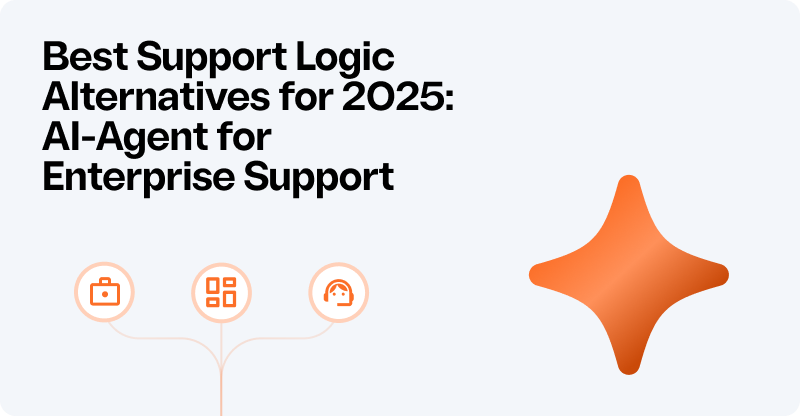
.png)
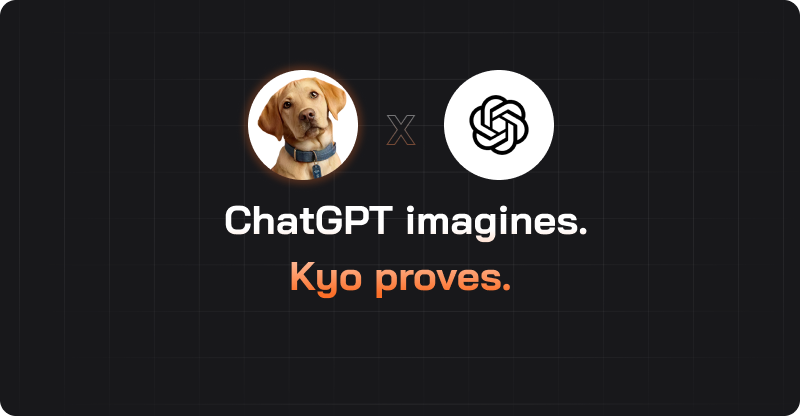
.webp)
.svg)











